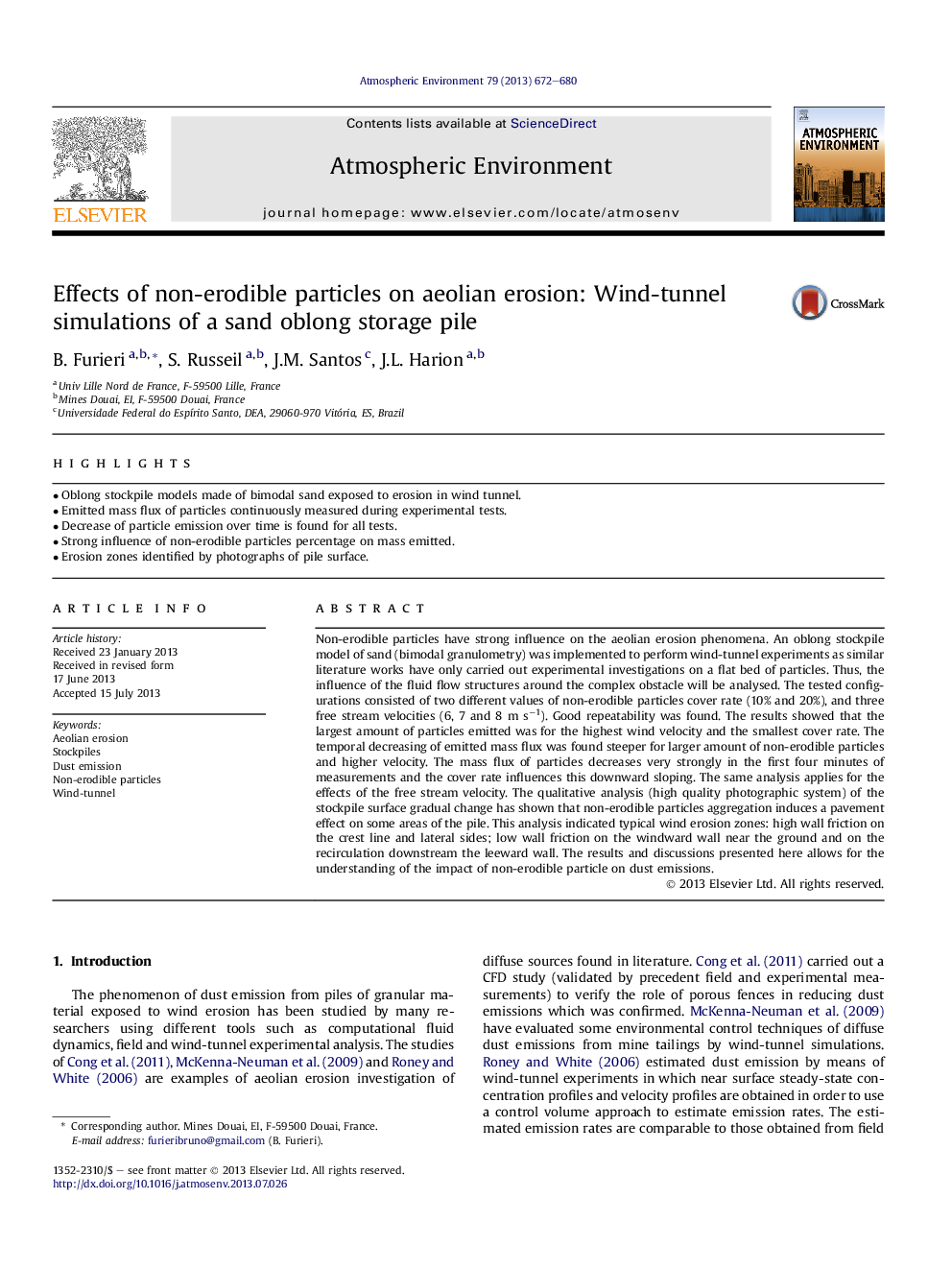| Article ID | Journal | Published Year | Pages | File Type |
|---|---|---|---|---|
| 6341559 | Atmospheric Environment | 2013 | 9 Pages |
Abstract
Non-erodible particles have strong influence on the aeolian erosion phenomena. An oblong stockpile model of sand (bimodal granulometry) was implemented to perform wind-tunnel experiments as similar literature works have only carried out experimental investigations on a flat bed of particles. Thus, the influence of the fluid flow structures around the complex obstacle will be analysed. The tested configurations consisted of two different values of non-erodible particles cover rate (10% and 20%), and three free stream velocities (6, 7 and 8 m sâ1). Good repeatability was found. The results showed that the largest amount of particles emitted was for the highest wind velocity and the smallest cover rate. The temporal decreasing of emitted mass flux was found steeper for larger amount of non-erodible particles and higher velocity. The mass flux of particles decreases very strongly in the first four minutes of measurements and the cover rate influences this downward sloping. The same analysis applies for the effects of the free stream velocity. The qualitative analysis (high quality photographic system) of the stockpile surface gradual change has shown that non-erodible particles aggregation induces a pavement effect on some areas of the pile. This analysis indicated typical wind erosion zones: high wall friction on the crest line and lateral sides; low wall friction on the windward wall near the ground and on the recirculation downstream the leeward wall. The results and discussions presented here allows for the understanding of the impact of non-erodible particle on dust emissions.
Related Topics
Physical Sciences and Engineering
Earth and Planetary Sciences
Atmospheric Science
Authors
B. Furieri, S. Russeil, J.M. Santos, J.L. Harion,
